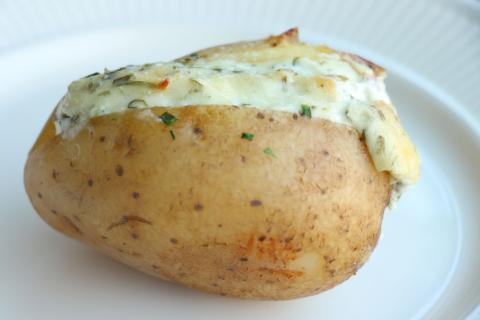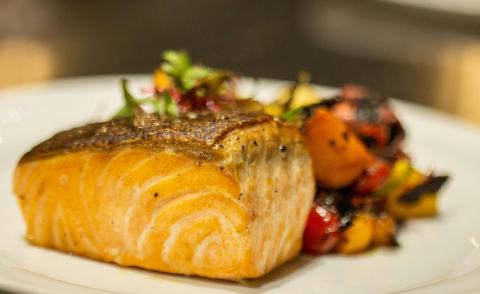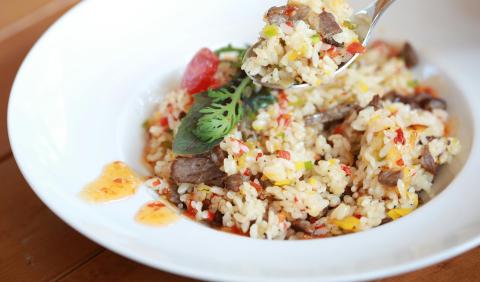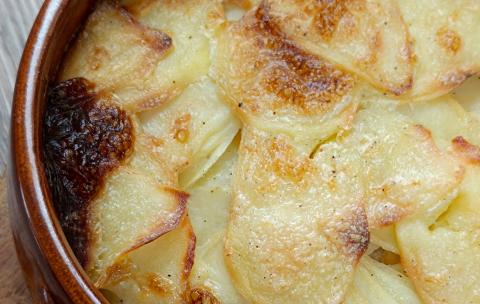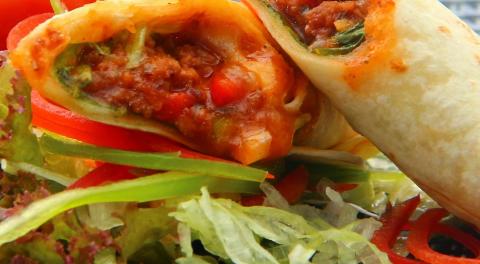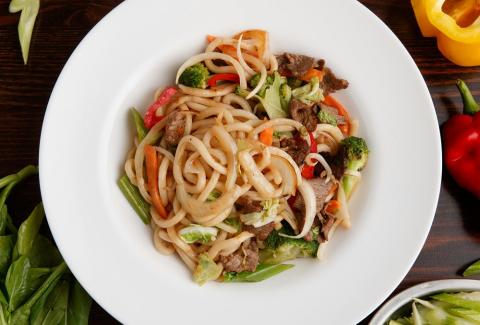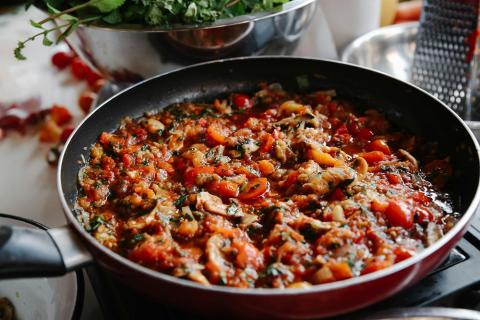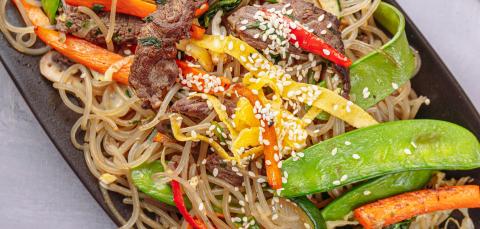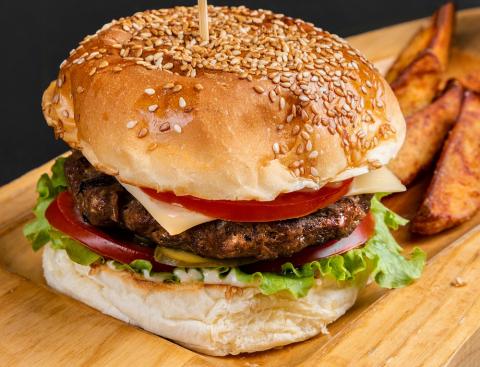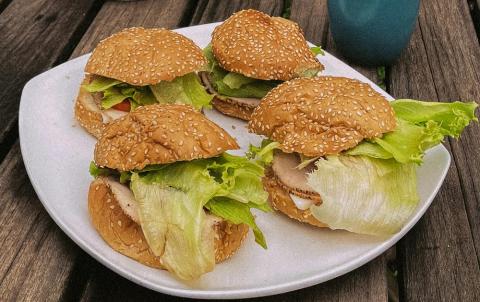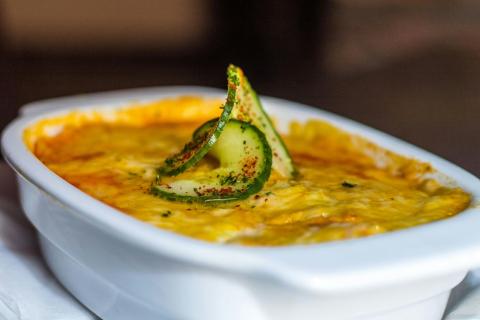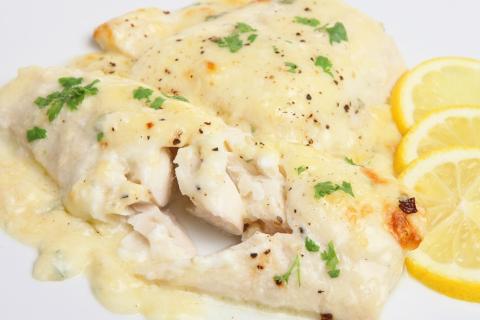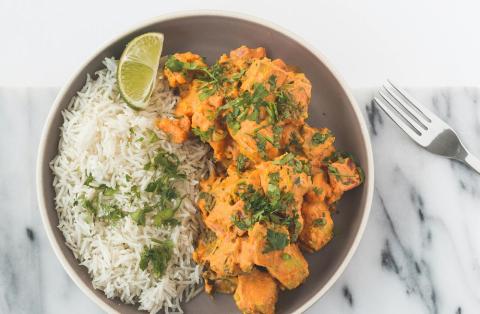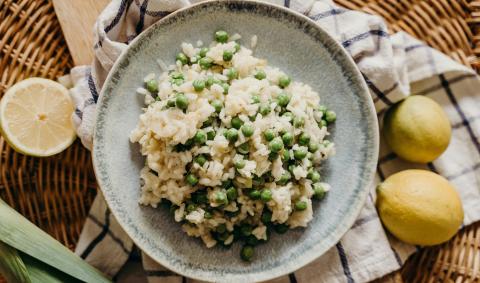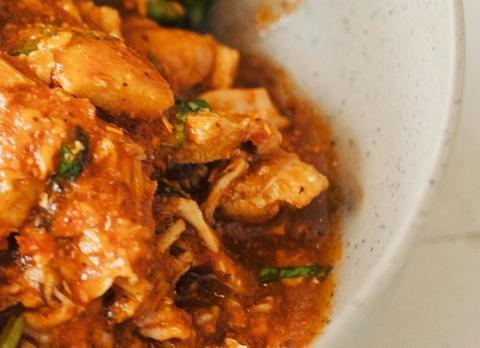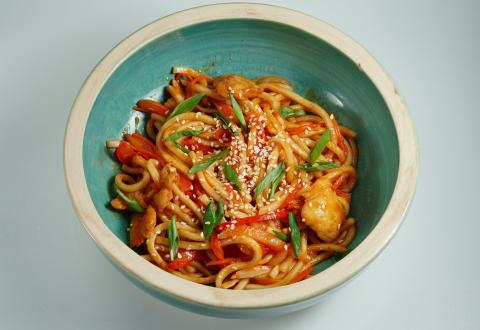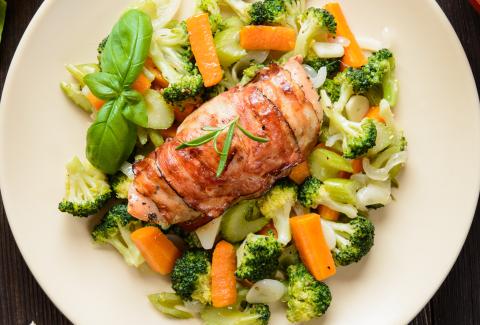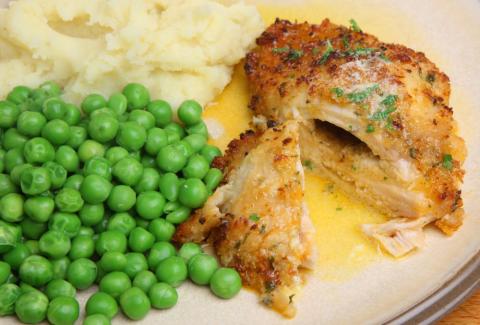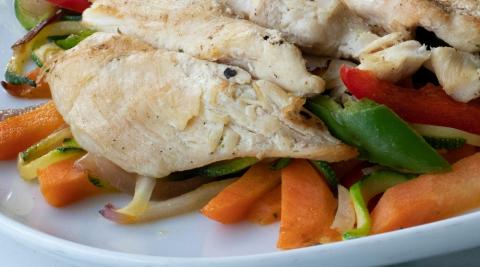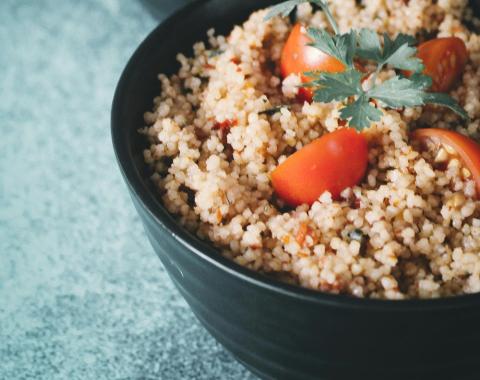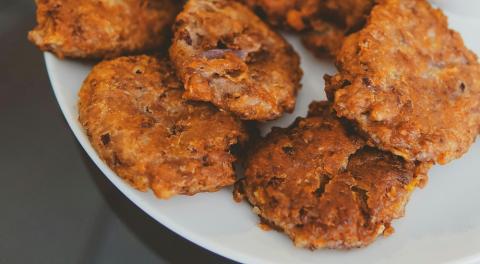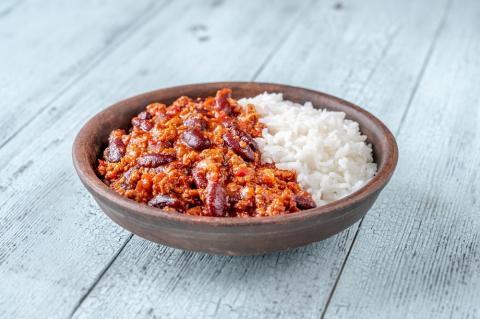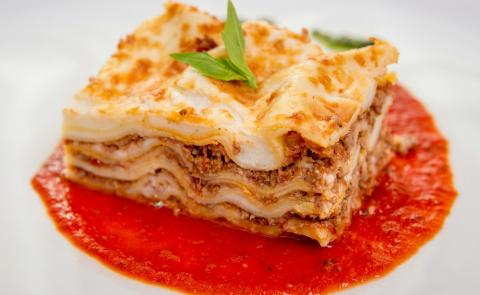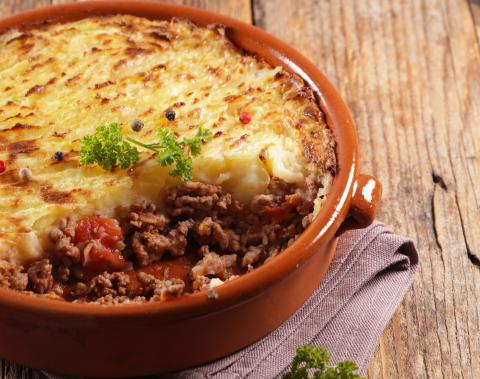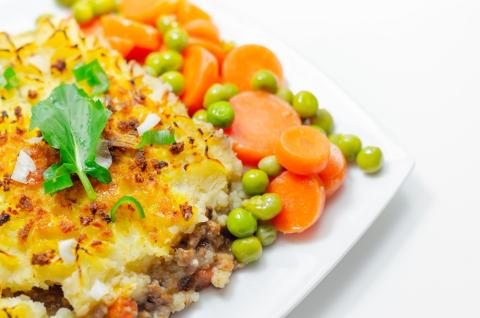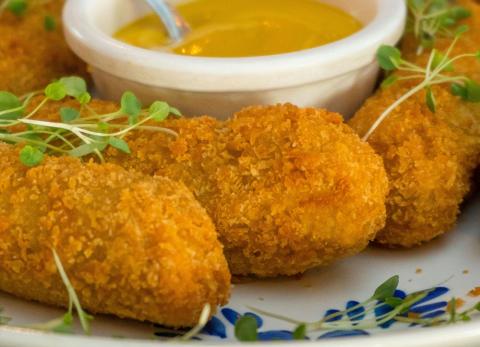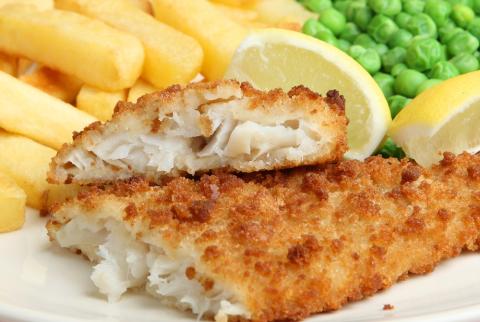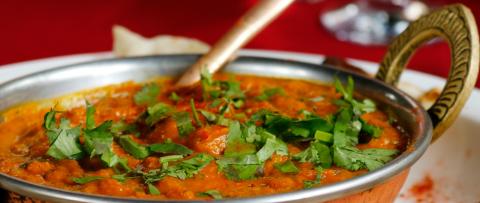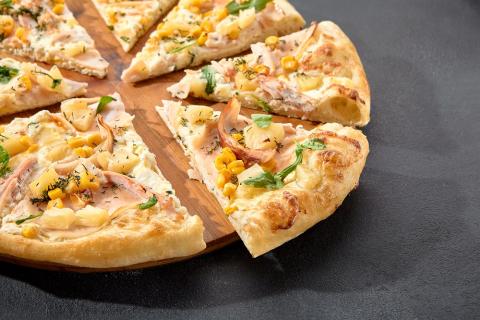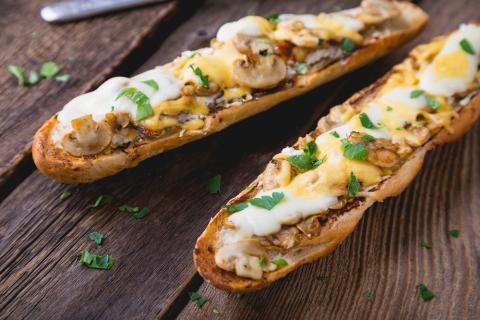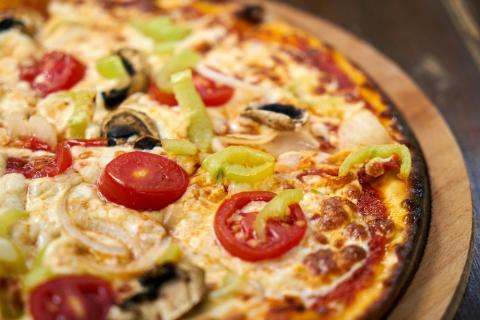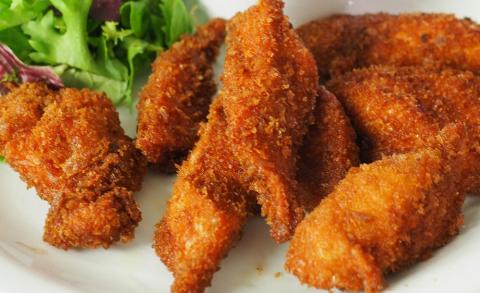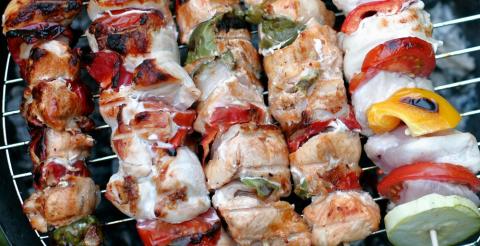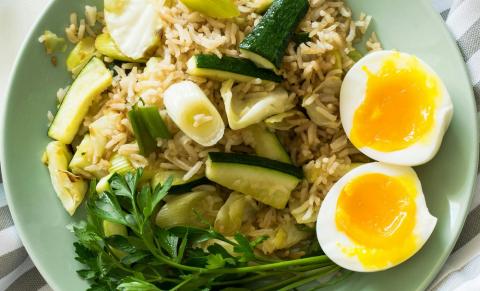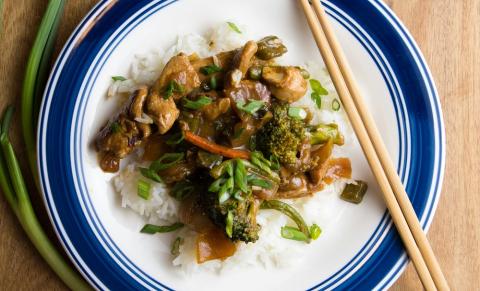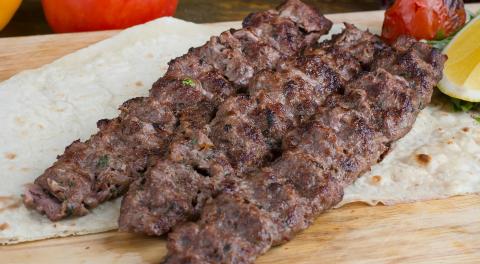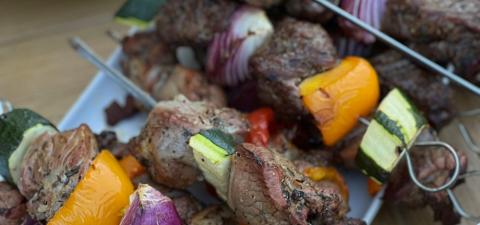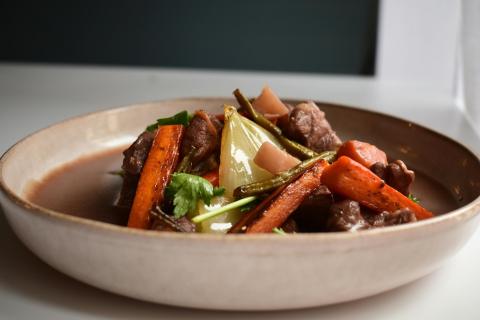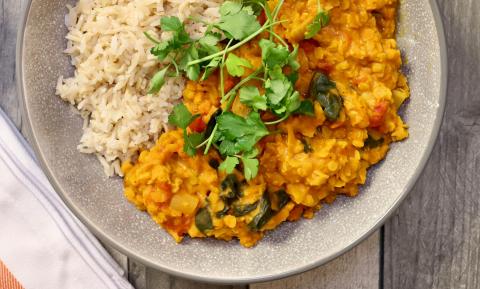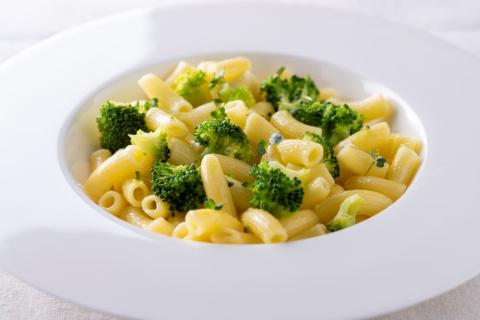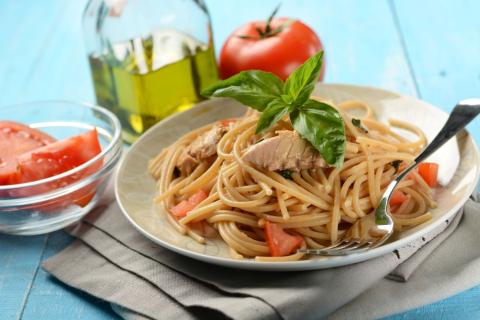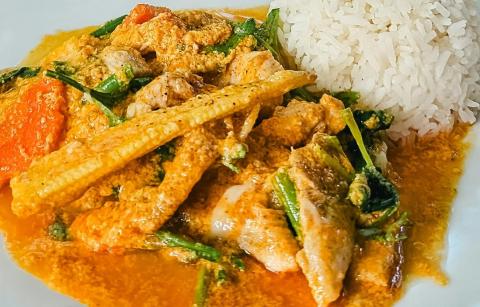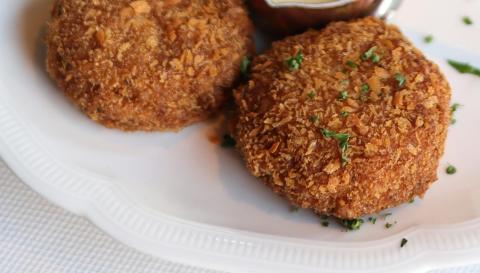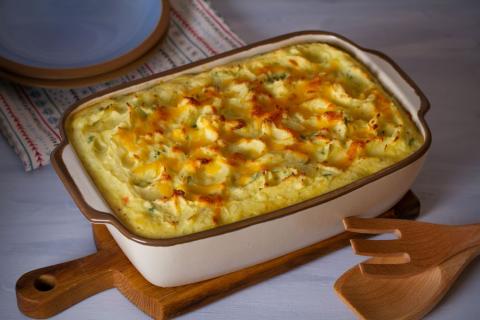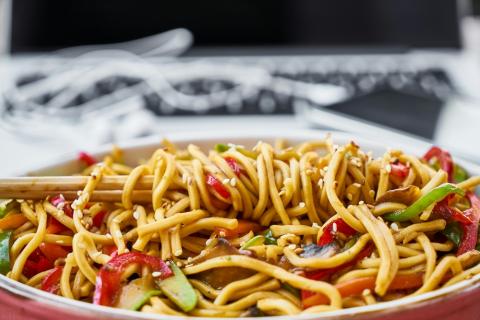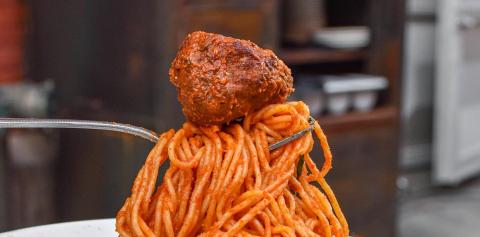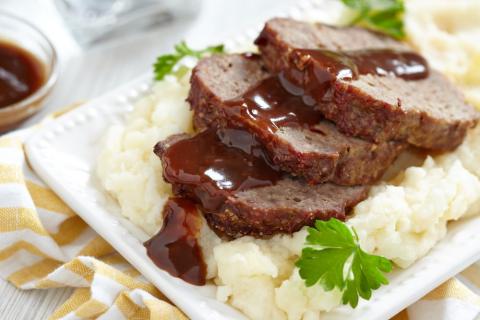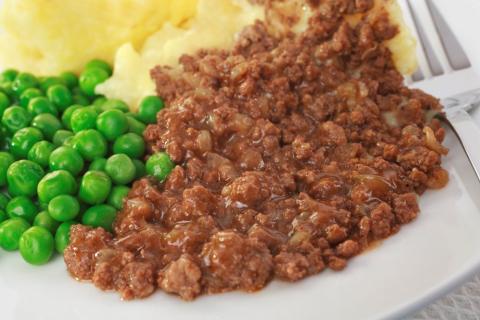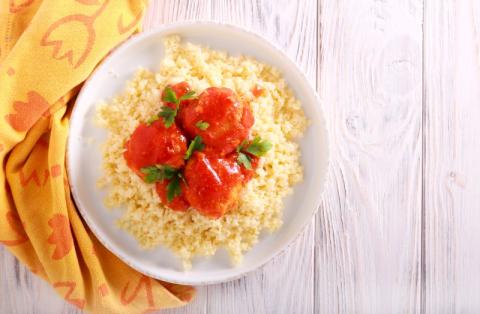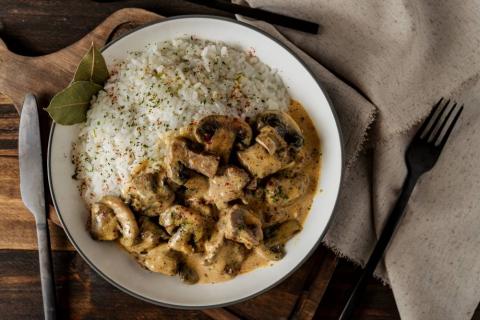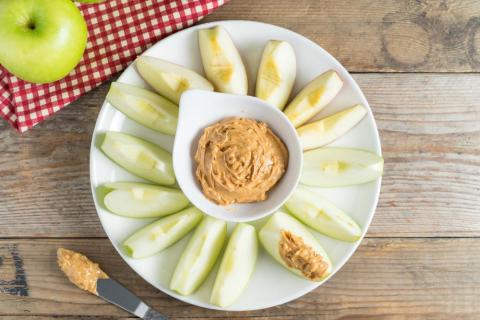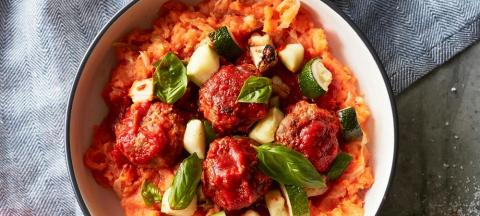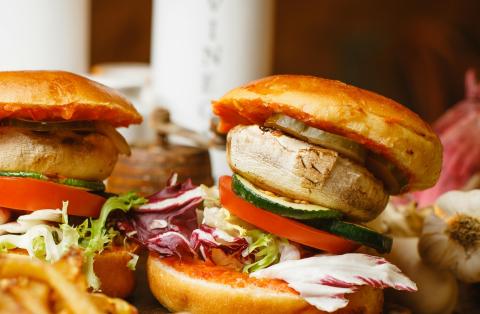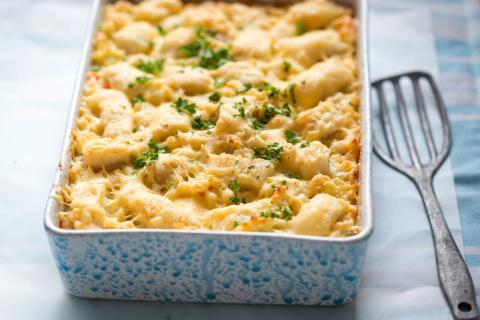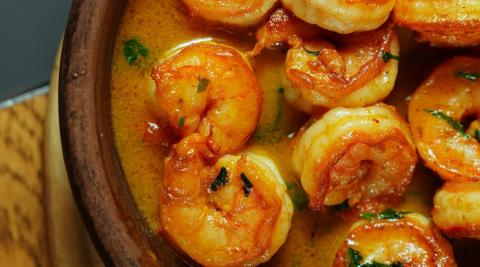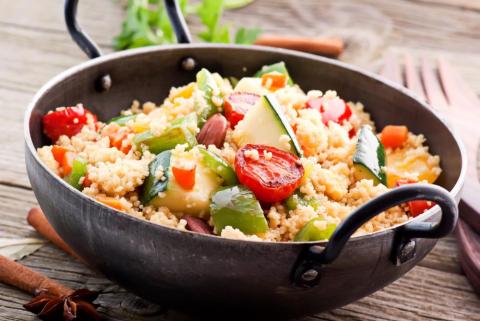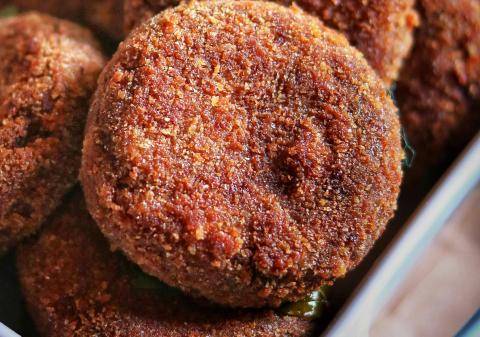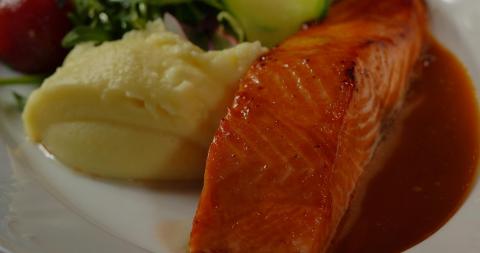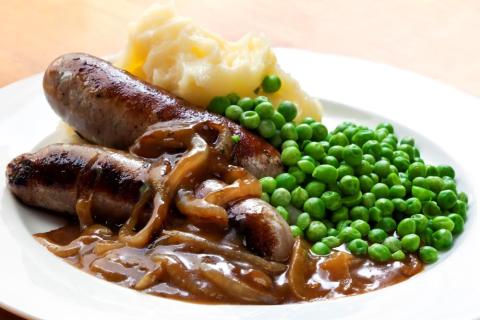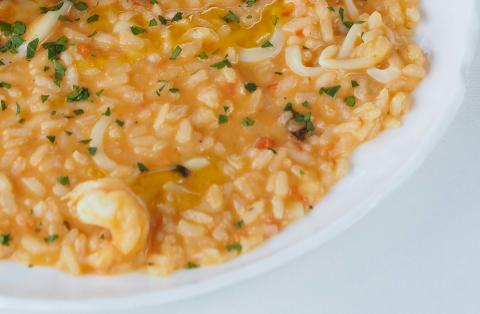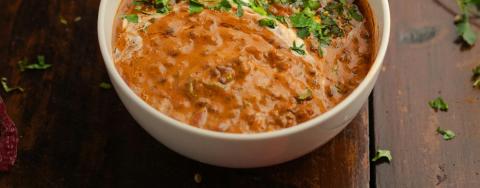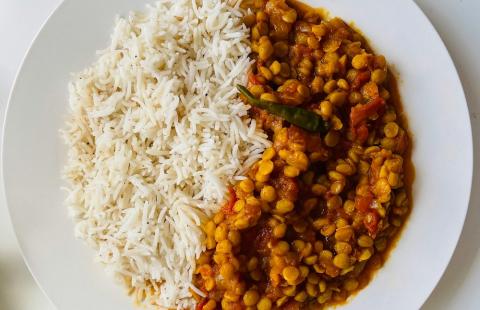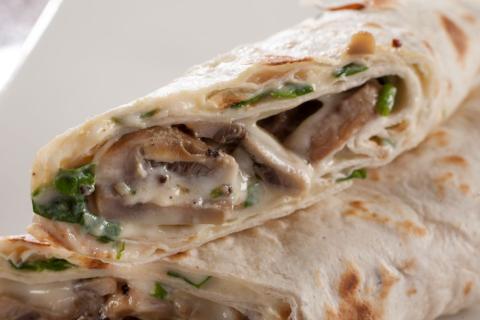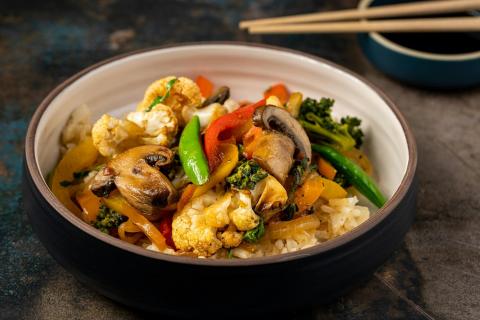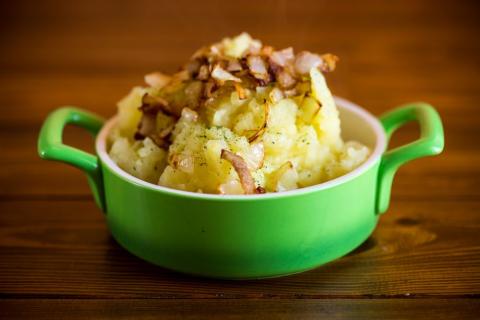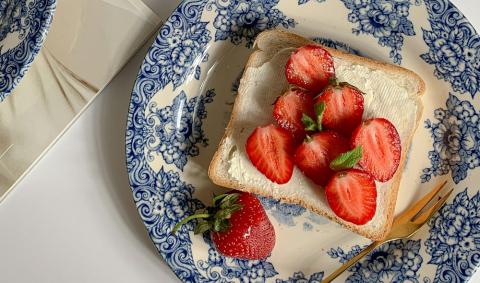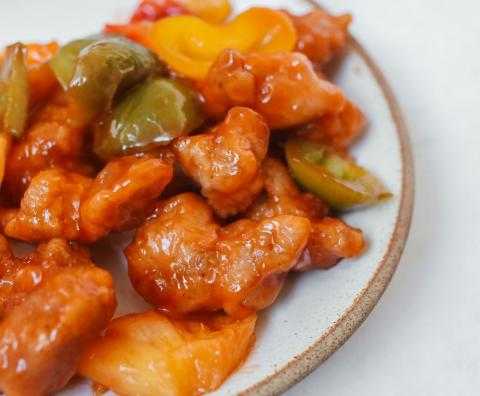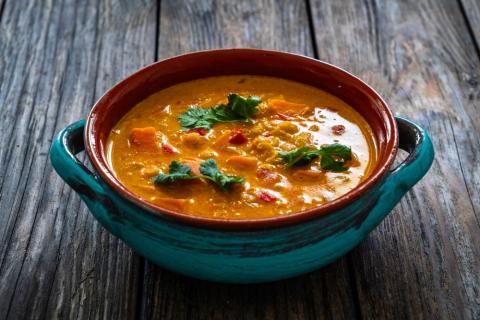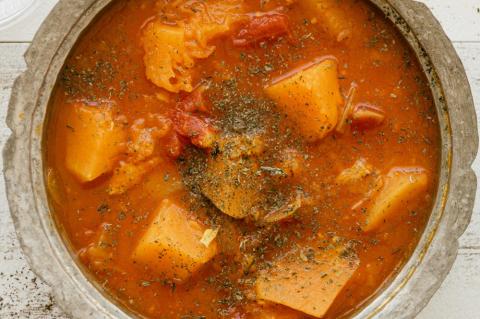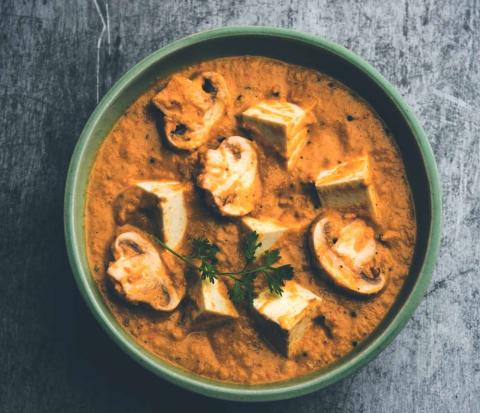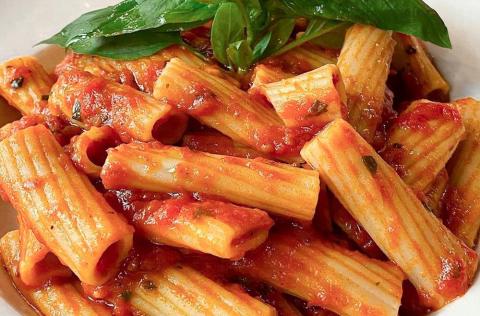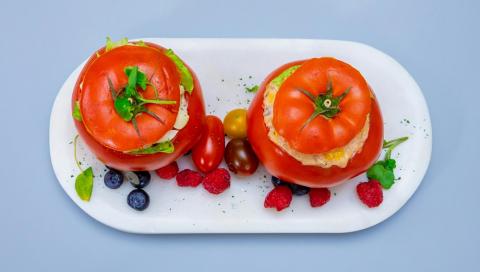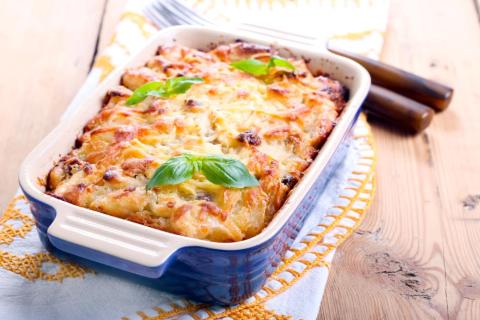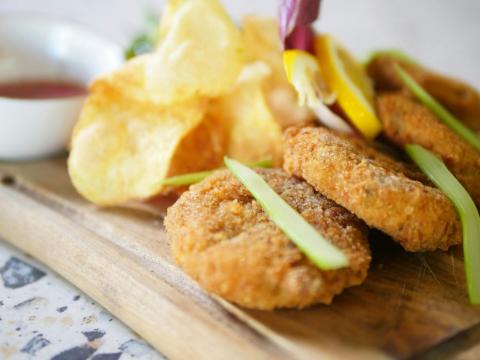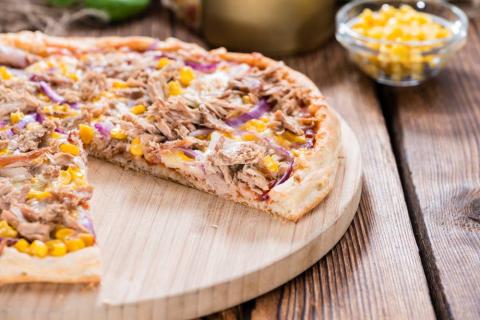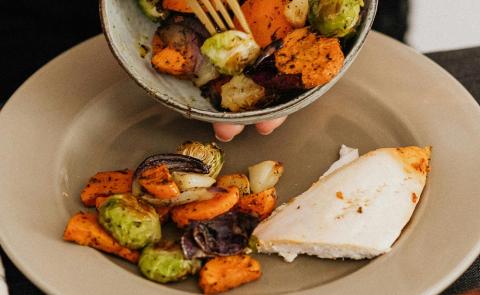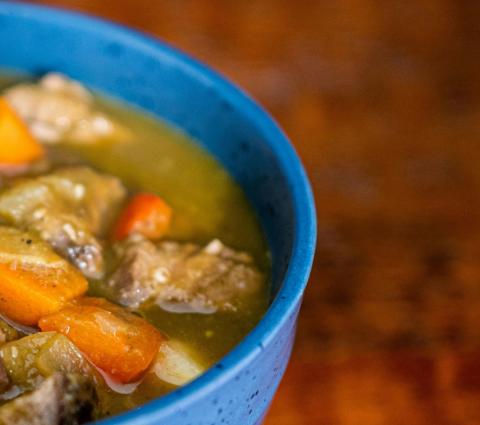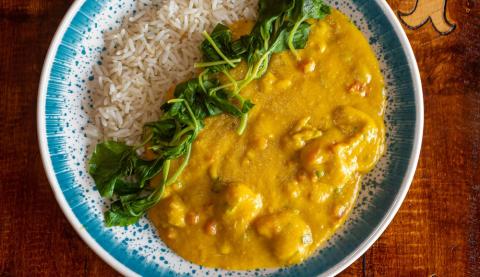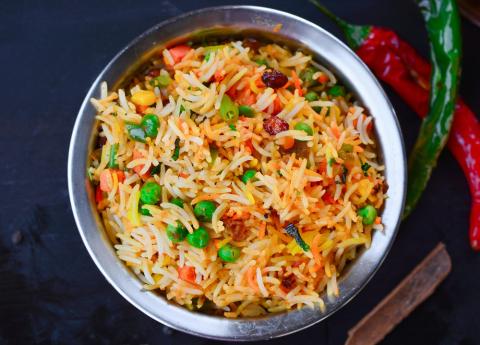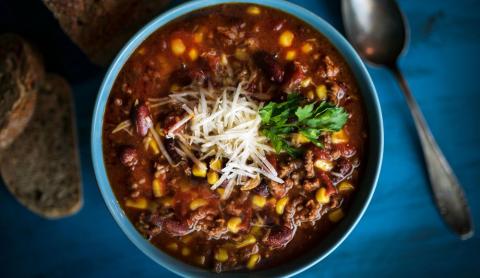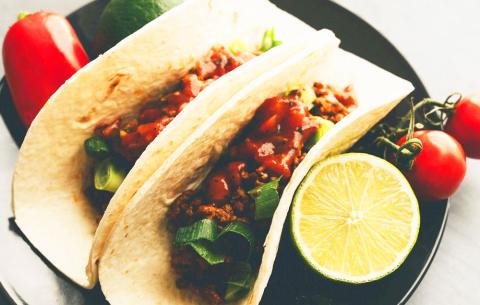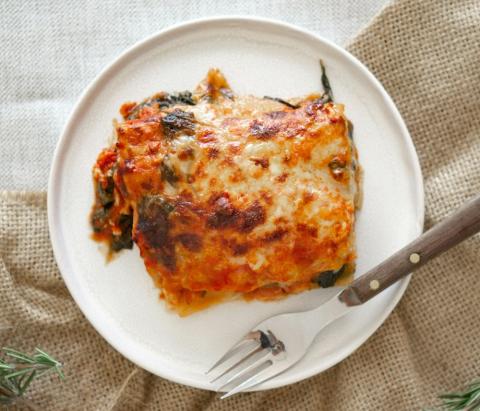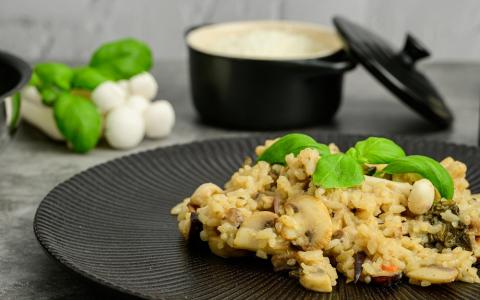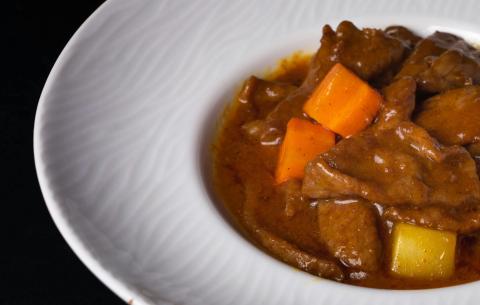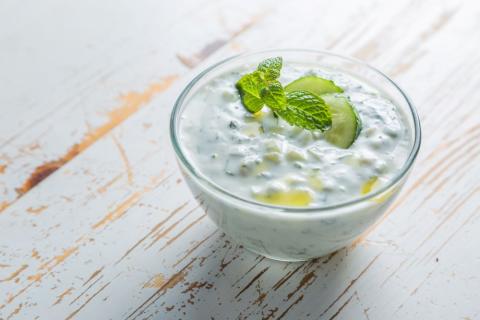- 1 Pack (400g) Pork
- 1 Medium Sized (150g) Onion
- 2 Medium Sized (160g) Carrots
- 10 Medium Sized (100g) Mushrooms
- 1 (160g) Green Pepper
- 1 Tablespoons (20g) Sugar
- 2 Tablespoons (30g) Vinegar
- 1 Can (400g) Pineapple Chunks In Juice
- 2 Teaspoons (10g) Ketchup
- 1 Heaped Spoonful (If Required) Teaspoons (10g) Cornflour
- 2 Tablespoons (20g) Vegetable Oil
- (250g) Egg Noodles
Ingredients
Allergy Disclaimer
Always check the label of each ingredient for allergy warnings.
Method
- Dice the pork into bite size pieces, heat the oil in a pan then add the pork and cook until sealed (2-3 minutes).
- Prepare and chop all the vegetables and add to the pan, cook for a further 5 minutes.
- Add the sugar and vinegar and cook until the vegetables are tender (5 minutes). Meanwhile cook the noodles as per the instructions on the packet.
- Drain the pineapple and add it with the tomato ketchup to the meat.
- Thicken if required using cornflour mixed first with 3-4 teaspoons of juice from pineapple.
- Serve with noodles.
You can use any type of noodles for this meal. If you don't have cornflour to thicken the sauce you can use any type of flour.
Time Saver Tips
Frozen vegetables are a quick and easy option – just make sure the pan’s hot before adding them so the dish doesn’t get soggy.
Cost Saver Tips
This recipe works great with any type of meat. So why not keep a lookout for offers on lamb, chicken, turkey, or beef? You could even try making it with salmon. Fancy making this veggie? Courgettes or bean sprouts are really tasty. Chickpeas or butter beans are a great meat-free option, too. To save, why not use whatever vegetables you’ve already got in? No need to worry about exact quantities, as long as it’s a mix of at least 500g. This works just as great with rice if you don’t have any noodles in your cupboard.
Tips for Kids
Why not try eating with chopsticks?
Nutritional Information
Based on a single serving of 415g (% of an adult's reference intake)
Energy
490 kcals ( 25 %)
2,473 kJ ( 25 %)
Fat
2.5 g ( 12 %)
Saturates
71.4 g ( %)
Sugar
23.2 g ( 26 %)
Salt
0.8 g ( 14 %)
Detailed nutritional information
| Per 100g | Per 415g serving | |
|---|---|---|
| Energy Kcals | 118 | 490 |
| Energy Kj | 596 | 2,473 |
| Protein | 7.3 g | 30.3 g |
| Total Fat | g | g |
| Saturated Fat | 0.6 g | 2.5 g |
| Carbohydrates | 17.2 g | 71.4 g |
| Total Sugars | 5.6 g | 23.2 g |
| NSP Fibre | 1.3 g | 5.4 g |
| Sodium | 73 mg | 303 mg |
| Salt | 0.2 g | 0.8 g |
Find out about nutritional labelling
Nutrition labels on the front of packaging
- Most of the big supermarkets and many food manufacturers display nutritional information on the front of pre-packed food.
- Front of pack nutrition labels provide information on the number of grams of fat, saturated fat, sugars and salt and the amount of energy (in kJ and kcal) in a serving or portion of a recipe.
- The labels also include information about reference intakes (expressed as a percentage) which are guidelines about the approximate amount of particular nutrients and energy required for a healthy diet.
- The colour coding tells you at a glance if the food has high (red), medium (amber) or low (green) amounts of fat, saturated fat, sugars and salt.
- The more greens on the label, the healthier the choice
- Amber means neither high nor low, so you can eat foods with all or mostly ambers on the label most of the time.
- Reds on the label means the food is high in that nutrient and these are the foods we should cut down on. Try to eat these foods less often and in small amounts.
Food shopping tips
If you’re trying to decide which product to choose, check to see if there's a nutrition label on the front of the pack. This will help you to quickly assess how your choices stack up. You will often find a mixture of red, amber and green colour coding for the nutrients. So when you're choosing between similar products, try to go for more greens and ambers and fewer reds if you want to make a healthier choice.
 Activities & Play
Activities & Play Behaviour
Behaviour Childcare
Childcare Development & Growing Up
Development & Growing Up Family, Friends & Relationships
Family, Friends & Relationships Feeding Your Baby
Feeding Your Baby Food & Eating
Food & Eating Health & Safety
Health & Safety Mental Health & Wellbeing
Mental Health & Wellbeing Money & Work
Money & Work Online Behaviour & Safety
Online Behaviour & Safety Pregnancy & First Days
Pregnancy & First Days School & Education
School & Education Sleep
Sleep


